Many of our Christian brothers overreact on the subject of the Gospel having changed over time and never accept any such idea.
They regard this as a sort of "renunciation of their faith": It is of course understandable for Christians to react against claims that their faith has become corrupted. However, in order to establish whether this is something that should never be mentioned and whether it might represent a renunciation of faith they need to reflect a little, look at the history of Christianity and reexamine all these in the light of the Gospel.
It is important to reiterate that the Gospel is also sacred to us as Muslims. We therefore have no desire for it to have been changed and misinterpreted. Yet this has happened, as we are told of it in the Koran. We therefore need to look at the evidence for this distortion and at historic events. Of course, this does not mean discounting the Gospel entirely. The original of the Gospel has been preserved down to the present day. It is currently concealed, and will be absolutely discovered by God’s will. The important thing, therefore, is to evaluate the Gospel in the light of the Koran in order to identify its true pronouncements and to think in a manner compatible with reason and good conscience.
However, there is one other matter needing to be known and reflected upon regarding the four Gospels currently used by our Christian brothers:
What you will be reading in this book is not deductions or claims made by Muslims. On the contrary, what the book says is all based on Christians’ own sources.
Material concerning the history of Christianity that has previously been set out in detail in our book Jesus (pbuh) Is Not the Son of God, But a Prophet of God is merely set out here under brief headings as a reminder:
- When we look at the earliest Christian documents and communities we see that Jesus (pbuh) taught nothing different to the Prophet Moses (pbuh) or the Prophet Muhammad (pbuh) on the subject of the existence and oneness of God.
- After Jesus, Christianity was spread by the disciples. They preached in places where monotheistic beliefs prevailed, particularly the Middle East, Jerusalem, Antioch and Urfa [Edessa]. Since these regions are those where prophets appeared, they turned to Christianity very quickly since the inhabitants were already familiar with monotheistic belief.
- The belief in the Trinity, which did not exist before, finally appeared long after Jesus as Christianity spread to regions where Greco-Roman paganism predominated.
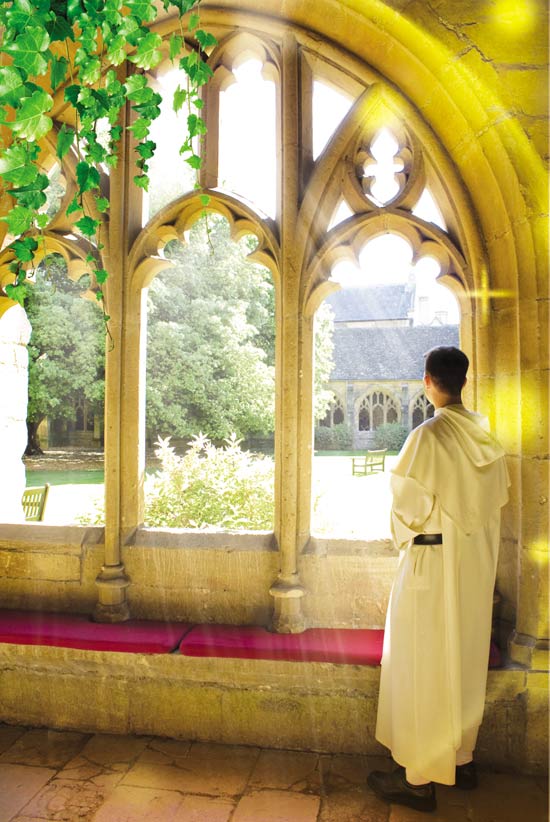 |
| This is the true account: there is no other god besides God. God – He is the Almighty, the All-Wise. |
- The reason is that the Christians who had converted from paganism in regions such as Alexandria in Egypt, Greece, Italy and Anatolia began to build a Christianity under the influence of their former beliefs that they called the Trinity.
Throughout the course of history, pagans have always regarded three idols as superior to all the others. They regarded the greatest of these as the Father, the second as the Mother and the third as the Son. Some examples are as follows:
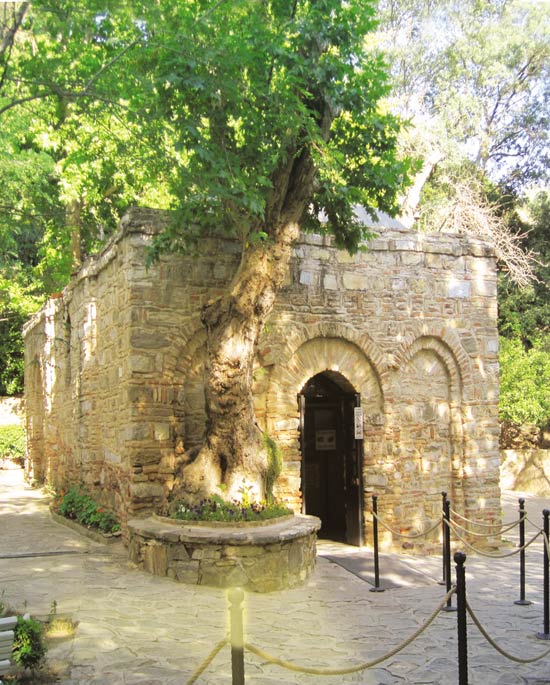 |
| The House of Mary, a church in Bülbüldağı in Selçuk, Izmir, where Mary, mother of Jesus (pbuh), is believed to have spent her final years. This is a place of pilgrimage for Christians. Her tomb is also thought to be in Bülbüldağı. This is regarded as sacred by Muslims as well as Christians. |
The American professor of theology Dr. Paul R. Eddy noted this and made the following comments on the subject in a paper "Was Early Christianity Corrupted by Hellenism?":
The general belief in paganism, especially in Greek and Roman paganism, was that the greatest of the three gods married a mortal woman and that she gave birth to a male child, who was also a god or quite often, a demigod.
Ancient Greek philosophers fabricated the idea of god through logical deductions from the physical world. However, they were unable to fathom how a god they regarded as unchanging and eternal could create finite and changing entities. For that reason, they attempted to explain the formation of the universe through a material entity.
Accordingly they maintained that, as a child is born to a mother and a father, so there must have been intermediaries between the gods and the entities for the universe to come into being; in other words, hierarchical divine entities. The senior god in this hierarchy was responsible for authority and creation, while the others were responsible for matters involving the world of space and time, and secondary deities covered sundry matters such as punishment and reward.
These supposed gods and godlike entities were generally defined as a "three-in-one entity," beginning with the most important. Therefore, belief in a trinity or a tripartite deity is a widespread idea that emerged in pagan times.
William Varner says that the perspective of the Gentiles [a term used in the Gospel to refer to non-Jews; it is also used for the Romans in the time of Jesus] who heard the preaching of Jesus was shaped in the light of these ideas. He goes on to say:
 |
| God is my Lord and your Lord so worship Him. That is a straight path. Those who remember God, standing, sitting and lying on their sides, and reflect on the creation of the heavens and the Earth: 'Our Lord, You have not created this for nothing. Glory be to You! So safeguard us from the punishment of the Fire. |
Statements about Jesus (pbuh) by believers in the Trinity bear uncanny similarities to the character of the pagan deity Dionysus in Greek mythology (Bacchus in Latin), the worship of whom is estimated to have persisted until around the Fourth Century AD:
While they were eating, Jesus took bread, and when he had given thanks, he broke it and gave it to his disciples, saying, "Take and eat; this is my body." (Matthew 26: 26)
Then he took a cup, and when he had given thanks, he gave it to them, saying, "Drink from it, all of you. This is my blood of the covenant, which is poured out for many for the forgiveness of sins." (Matthew 26: 27-28)
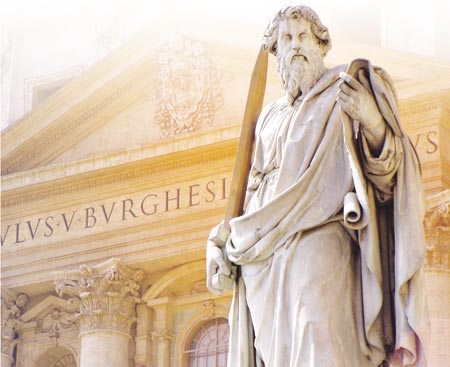 |
| One of the many statues in front of the Basilica of St. Peter is that of Paul. |
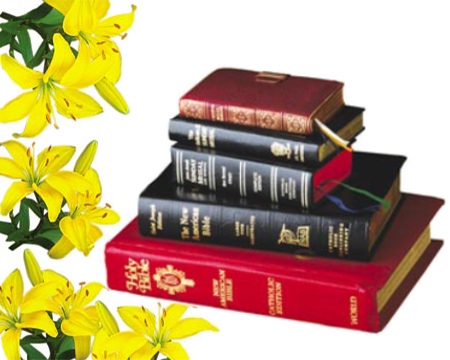 |
The council was held for the following reasons:
The Roman Empire’s expansion into lands where Christianity had spread.
Tensions had arisen between pagans and Christians because of that expansion and the Empire faced the threat of being divided into two.
The idea that a new belief, a synthesis between the old pagan faith and the new Christianity, was needed if the Empire was not to be divided in two, and for preparatory work to be done on this.
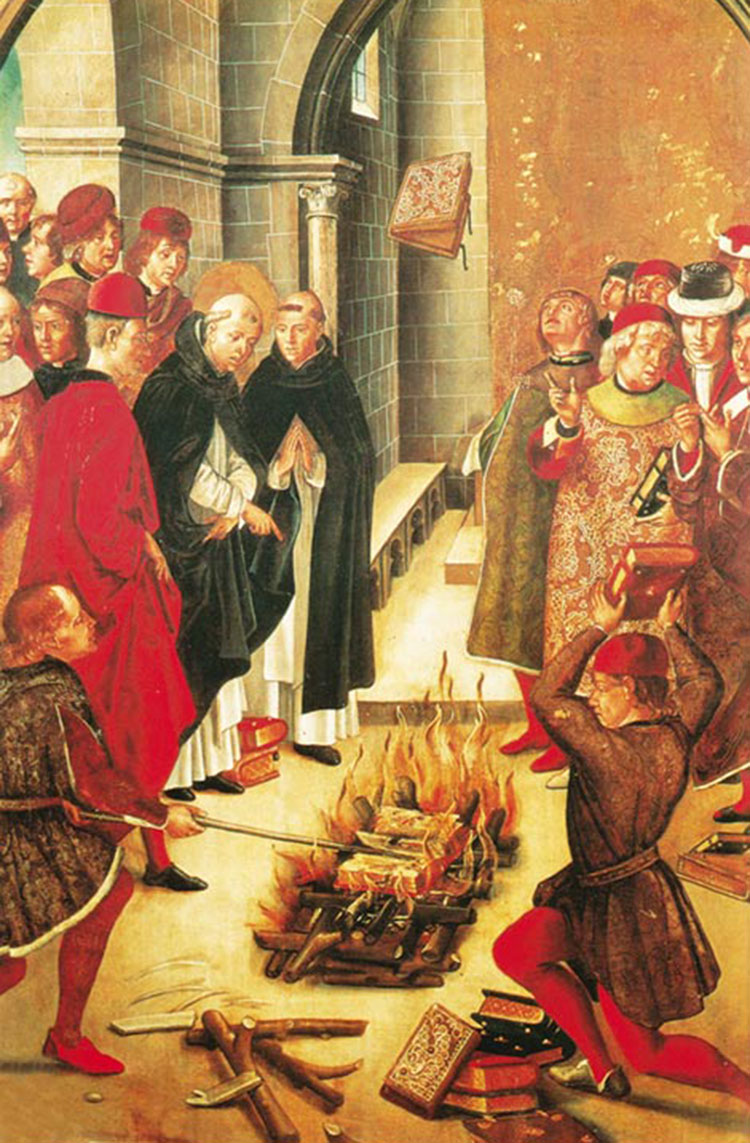 |
| A drawing by Pedro Berruguete showing books considered heretical and being burned by order of the Inquisition and its courts. |
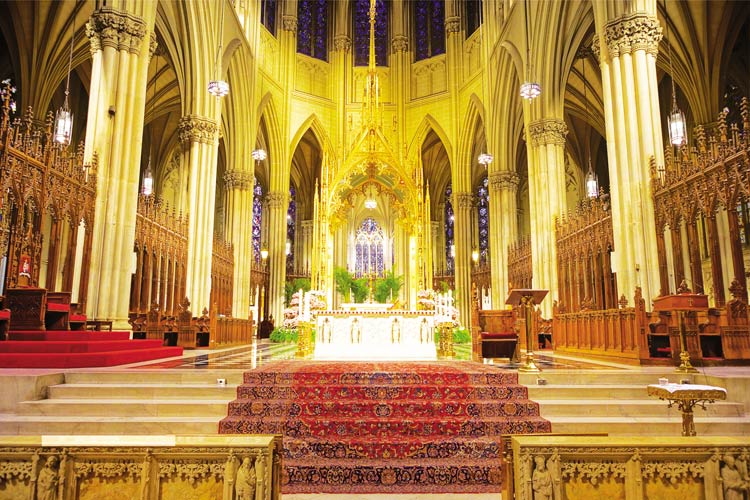 |
| That is God, your Lord. There is no god but Him, the Creator of everything. So worship Him. He is responsible for everything. They believe in God and the Last Day, and enjoin the right and forbid the wrong, and compete in doing good. They are among the righteous. |
Christians Must Heed Jesus St. Patrick’s Cathedral in New York
As is clear from above, the Papacy and the Church obviously possessed greater authority than a holy book. And that is the case still, despite the Reformation, meaning a return to the holy book, and the Protestant movement.
 |
 |
| The Church of St. Peter The First Vatican Council, or Vatican I: 800 church leaders were called together by Pope Pius IX on June 29, 1868. This council issued the final decision regarding the belief on the Trinity, which was made part of Christian dogma by church councils and for which there is no logical basis: "The Trinity is not a matter of reason and logic. There is no need for you to sit and think about it." In this way, the Trinity was made an article of faith without being understood, and those who refused to believe were excommunicated. |
This subject will be considered in greater detail in the pages that follow.
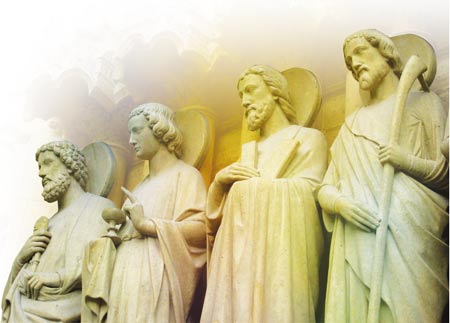 |
| On the one hand, the Church stresses the unchanging nature of the Gospels. On the other hand, however, it has had no qualms about making various additions and subtractions so that the four Gospels would become compatible with one another. |
(Prof. Dr. Mehmet Bayrakdar, The Trinity, a Christian Dogma, Ankara School Publications, September 2007, p. 163)
 |
The text of the Gospel According to John is accepted to have been written in 110 AD; it is generally considered to be the oldest of the canonical Gospel. This means that the disciple John must have lived for at least 140-150 years, which is highly unlikely. In addition, the fact that the text of John contains information from much later times also casts doubt on whether the disciple John was really the author of the Gospel.
The other Gospels emphasized that Jesus is the Messiah of the Jews, is descended from the line of the Prophet David (pbuh) and will liberate Israel. However, all Judaic concepts that would displease Hellenic Christians were removed from the Gospel According to John. The influence of Greek philosophy in the Gospel According to John is very obvious.
 |
To summarize the actions taken to resolve the confusion over the Trinity: (surely God is beyond this) The explicit and official recognition of the divine status of Jesus stems from the decision of the Council of Nicaea in 325 and the divine status of the Holy Spirit from the Council of Constantinople in 381. The dual nature of Jesus, one part divine and one part human, was raised at the councils of Ephesus in 431 and Chalcedon in 451, and the question of filioque, the Holy Spirit coming from Jesus was discussed at the councils held in Toledo in 447 and 589 and was resolved at the Council of Constantinople. This brief summary here reveals that further confusion was loaded onto Christianity at every council.
To reiterate, all the information provided above is based on documentation and other evidence from Christian, not Muslim, historians and theologians. This provides essential information on how Christianity developed and how the Gospel assumed its present form. These are fundamental historical details proving that the belief in the Trinity has no place in the true Gospel.
What someone needs to do after seeing all this evidence is to seek to understand the truth by reflecting and using logic, analyzing the Gospel in view of all these historical data. In order to pursue this logical inquiry, the following questions should be considered in the light of reason and good conscience:
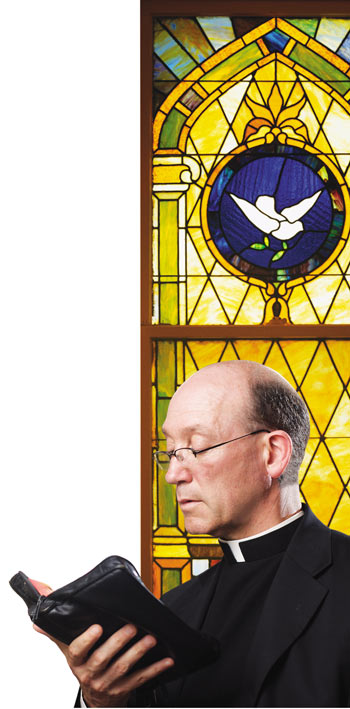 |
No Christian who supports the Trinity can give a truly logical, rational, comprehensible, convincing, clear and concrete answer to the above questions. This extraordinary confusion under the name of the Trinity is completely inexplicable.
The above questions refer to just some of the discrepancies on the subject of the four canonical Gospels on the basis of historical facts. The real issue is the profound logical collapse that belief in the Trinity brings with it. It is this profound and deep-rooted logical collapse that must cause sincere Christians to doubt their belief in the Trinity. This will be discussed in the pages that follow.
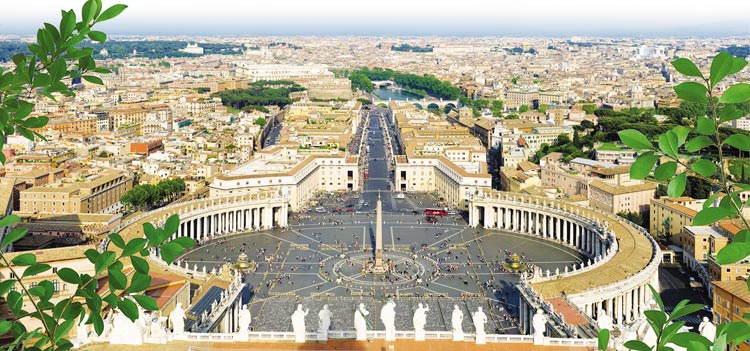 |
A Christian who espouses the Trinity may at first reject the above statements based on historical documentation and interpretations of these. This does not alter the fact, however, that the present four canonical Gospels were chosen from a total of 27.
A council decree declared that these four Gospels represent the true scripture of Christianity. The discrepancies and inconsistencies among these Gospels are too great to be ignored or denied. Therefore, a sincere Christian should set aside the dogmatic decisions of the Church and think with reason and good conscience and reflect a little on whether these can be regarded as books "not one single letter of which has ever changed." The books in question, not one letter of which has ever supposedly been changed, were in fact changed time and time again by the Church itself. This is established by Christian historical documents. The footnotes regarding statements in old copies of the Gospel in present-day editions by themselves make this perfectly clear.
Another important matter which must be mentioned here is the situation of Christians who lived during the three centuries after Jesus and the disciples up until the recognition of the four canonical Gospels containing belief in the Trinity. Even if these people believed in Jesus and the Gospel with all their hearts, they were still in a position, in the eyes of the dogma imposed by the Church, of having abandoned the faith. How can that be possible? Who could possibly maintain that people lived in ignorance of the truth for so long when there was a true faith and its holy book present as a warning? God would never permit such a thing.
What therefore calls for skepticism is not the period before the Fourth Century, when the original of the Gospel was around in handwritten manuscripts, when Aramaic, the original language of the Gospel was still in use, and when at the very least there were no errors of reproduction and translation, but the period that followed. The period immediately after the disciples was in all probability a time when genuine copies of the Gospel that Jesus caused to be written down [Jesus in all likelihood had the revelation that came to him written down in his own day] were present and applied. The monotheistic belief that was a continuation of Judaism survived in that period. Indeed, as also stated in the Koran, the Gospel was sent down to confirm the Torah. Therefore, the monotheistic belief that represents the basis of Judaism would also be confirmed in the genuine Gospel. As our Lord reveals in the Koran:
And We sent Jesus son of Mary following in their footsteps, confirming the Torah that came before him. We gave him the Gospel containing guidance and light, confirming the Torah that came before it, and as guidance and admonition for those who have piety. (Koran, 5:46)
Some Christians maintain that the disciples spread the idea of the Trinity after Jesus, and that they even died for its sake. Yet this is false. The disciples who were at Jesus’ side never espoused belief in Trinity, and never could have. (The only person known to have propagated belief in the Trinity is Paul, and as many Christian theologians and sources confirm, Paul never met Jesus and even opposed him in his time.) Like all the other first Christians, Jesus and the disciples were devout Jews and members of the People of Israel. There was no belief in the Trinity among these first Christians. The books they were sent to confirm the Torah confirmed the monotheistic faith set out in the Torah. It is very odd that in our day Christians do not consider them as Christians, referring to them as "Jewish Christians," as if Jesus were not a Jew before revelation came to him and also one of the Children of Israel.
Therefore, the period up to the Fourth Century was a continuation of Judaic monotheism, and in all probability one when a monotheistic faith predominated with the original of the Gospel. The period following the Fourth Century should be regarded as a time when the Roman Empire ruled, when paganism and the pagan belief in the Trinity spread across the world with that empire, when Aramaic, the original language of the Gospel was forgotten and Koine Greek began being used, and when political disorder, civil conflicts and religious wars prevailed. The historical information provided above therefore needs to be well considered in that light.
 |
It is of course understandable why some Christians are unwilling to admit the possibility of the Gospel, sent down by God as a source of light, changing over the course of time and being misinterpreted. They may be uneasy at the idea of obeying a true book that has been corrupted. But sincere Christians need to bear this in mind: The present-day Gospel is to a large extent true. The original Gospel sent down to Jesus (pbuh) is revelation from God consisting of very profound and wise words and is praised in the Koran. Just like Christians, Muslims also have a duty to abide by those words.
In addition, all the original, uncorrupted Gospel has been preserved. It is waiting where it has been concealed for the time of its discovery. By God’s leave, the original of the Gospel will be discovered in the time when we see the coming of Jesus and Hazrat Mahdi (pbuh). There is therefore a Gospel that has not been altered in any way, as Christians maintain. Our criticisms here are directed toward those parts of the four Gospels, which are currently regarded as true but that harbor numerous discrepancies, that have been distorted and misinterpreted. The existence of such sections is so evident as to be easily apparent to any honest Christian. The contents of this book call on our Christian brothers to reflect with reason, logic and good conscience.
Almighty God is of course powerful enough to preserve the true books He sends down as guides for people. Some Christians point to this sublime attribute of our Lord in order to repudiate statements about the Gospel having been corrupted. However, there is secret wisdom here that needs to be properly understood:
To reiterate, of course God is powerful enough to preserve His book. Almighty God is also powerful enough to create everything in the universe quite flawlessly. It is God Who also creates flaws and defects in the universe. There is particular wisdom behind God’s creating flaws. Through these, we always remember that this world is a place of temporary testing, that we are weak before God and that our true abode is in the hereafter, not this world. One cannot grow proud in the face of deficiencies and one will always be aware of one’s weakness before and need of God.
 |
| And We sent 'Jesus son of Mary following in their footsteps, |
The corruption of the Holy Gospel, the evidence for which is perfectly clear, is something that happened by God’s leave and will. It was created with wisdom as part of a very special test by God. If God creates it in this way and shows the evidence on the subject so clearly, then we must see and grasp the wisdom behind it, rather than being stubborn about it.
The Christian world is obviously being tested by this. They are being invited to heed their consciences.
This state of affairs is clearly required in order for people to seek the coming of Jesus and the true Gospel.
With this test, false beliefs may perhaps enfold the world, people may be encouraged toward conflict, disorder and bloodshed in the name of religion and the signs of the coming of Jesus and Hazrat Mahdi revealed in the Torah, Gospel, Koran and hadiths will come about. Therefore, the real task befalling sincere Christians is to seek and apply the true provisions of the Gospel.
At the same time, Christians must be aware of the reality that all the genuine provisions of the true Gospel are present and reported in the Koran. The true provisions of the Gospel are also contained in the Koran, for which reason Muslims also have an obligation to live by the true Gospel.
The Koran is a true book that confirms the Gospel. Therefore, in the same way that Muslims are followers of the Prophet Muhammad, they are also followers of Jesus who apply the true Gospel and followers of Moses who apply the true Torah. Therefore, if a sincere Christian wishes to abide by the truth of the Gospel and to arrange his life in the light of the true Gospel, he will find all the relevant provisions in the Koran. The true Gospel is one of our holy books that Almighty God praises in the Koran. God reveals in the Koran that the Gospel was a guide for the people at the time it was sent down:
He has sent down the Book to you with truth, confirming what was there before it. And He sent down the Torah and the Gospel, previously, as guidance for mankind … (Koran, 3:3-4)
And We sent Jesus son of Mary following in their footsteps, confirming the Torah that came before him. We gave him the Gospel containing guidance and light, confirming the Torah that came before it, and as guidance and admonition for those who have piety. (Koran, 5:46)
Then We sent Our messengers following in their footsteps and sent Jesus son of Mary after them, giving him the Gospel. We put compassion and mercy in the hearts of those who followed him. They invented monasticism – We did not prescribe it for them – purely out of desire to gain the pleasure of God, but even so they did not observe it as it should have been observed. To those of them who had faith We gave their reward but many of them are deviators. (Koran, 57:27)
In conclusion, our Christian brothers must read the Koran from that perspective before rejecting it out of prejudice. It must not be forgotten that everyone who seeks the understanding with which to differentiate truth from falsehood can attain this great blessing from God.
 |